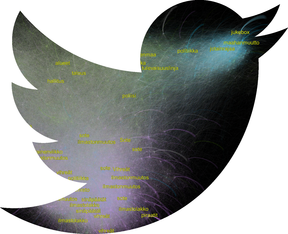Finns were reluctant to share election tweets of bots

The number of Twitter bots and their influence on the Finnish elections this spring were minimal. Researchers make this conclusion in the final report of ELEBOT project. Despite the small number of bots, the results indicate that bots distribute unequally over the internet.
Bots produce either real or distorted information in an automatized manner. They are one form of information operations that aim to influence on, for example, election results. Aalto University researchers found information operations in content shared on Finnish Twitter before the Finnish parliamentary and European elections. However, bot tweets received only little attention from normal Twitter users who seemed reluctant to retweet content created by bots.
Before the parliamentary election, a bot wrote only half percent of all retweets by normal users and 0.7% of retweets were written by a so-called stopped account. Stopped accounts are user accounts that Twitter has closed or frozen due to spam or another security risk. Before the European elections, equivalent proportions stayed below half percentage.
The difference is large in comparison to, for example, the US mid elections held in November 2018. In the US elections, more than 35 percent of bots’ tweets were retweeted at least once. Researchers of ELEBOT project used same measures that have been used, for example, in the US elections.
The distribution of bots is unequal
According to the report results, bots tweeted mainly about the same topics as normal users. However, bots and normal users retweeted different types of tweets and interacted with different users. This suggests that bots’ operate unequally over the internet.
By using the most popular retweeted topics, the researchers were able to visualize communities whose members were more linked to their in-group members than users of their out-group.
The researchers recognized the three largest communities that were visualized in green, purple, or blue in the report. The smallest community was the blue one, formed by about seven percent of all users. In it, the relative share of certain hashtags – often relating to immigration or the right wing populist Finns Party – was larger than in the other communities. Nearly eight percent of bots and stopped accounts belonged to the blue community.
In the European elections, the distribution of bots and stopped accounts was similar to that in the parliamentary election. In the blue community, less than 2% users were bots, but they interacted with each other quite often; around 14% of all interactions between bots and stopped accounts happened in this community. Based on visual observations, such interactions were more frequent in the blue community than in other communities.

Twitter isn’t the only platform for information operations
The data gathered for the parliamentary election analyses included 188,668 unique users who published more than 1.3 million tweets in total. For the European elections analyses, the number of tweets in Finnish was 490,000, and 46,000 users tweeted about the elections. When more global topics were taken into account, the number of relevant tweets increased to nearly 660,000 and the number of Twitter users around 118,000.
About five and half percent of the Twitter users who tweeted about election themes before the parliamentary election were bots. They created 2.5% of all election-related tweets. During the EU elections, around 2.8% of all users tweeting about the elections were bots, producing 1.8% of all election-related tweets.
Even though the number of bots and their influence was minimal, researchers point out that the model used for bot-recognition may be unable to recognize all bots. Bots progress quickly and creating a better model calls for deeper development work. It is also important to remember that a normal user who isn’t classified as a bot can try to influence public discussions in a similar manner as a bot.
Information operations may have occurred also in other social media channels. In principle, Twitter is an open platform and the data collected by it is easy to access. The extent to which bots had effect on elections would be best discovered by taking into account also other platforms, such as Facebook. However, many services are more difficult to research as they tend to less open than Twitter.
Researchers gathered data by using the Twitter API from January 20 to April 15 for the parliamentary elections. They studied the tweets related to the EU elections from April 14 to May 31.
The report published by Aalto University has been written as part of the ELEBOT project that has been funded by the Finnish Ministry of Justice and Ministry of Education and Culture. In addition to the funding parties, the steering group of the project included representatives from the Finnish Security Committee and Prime Minister’s Office.
Link to the research report (in Finnish): https://aaltodoc.aalto.fi/handle/123456789/39200
Further information
Mikko Kivelä
Assistant Professor, Department of Computer Science
Phone 050 3824 555
mikko.kivela@aalto.fi
Raimo Kantola
Professor, Department of Communications and Networking
Phone 040 7501 636
raimo.kantola@aalto.fi
Further information about the report content and analytics
Ali Salloum
Research Assistant, Department of Computer Science
ali.salloum@aalfo.fi
Tuomas Takko
Research Assistant, Department of Computer Science
tuomas.takko@aalto.fi
Read more news
Growing Materials, Growing Ideas: Inside the BioMaker Studio
At Aalto University’s BioMaker Studio, initiated by Ena Naito, students and researchers experiment with living materials, from algae to mycelium, creating an open, interdisciplinary space where design, biology, and collaboration grow together.
Your voice gives away valuable personal information, so how do you keep that data safe?
With speech technologies becoming increasingly common, researchers want to make sure we don’t give away more information than we mean to.
Aalto in 2025: Quantum leaps, creative breakthroughs and solutions for a better life
Growth, technology and industrial renewal; human-centred solutions; health and everyday wellbeing; and enjoyable daily life and thriving communities.






